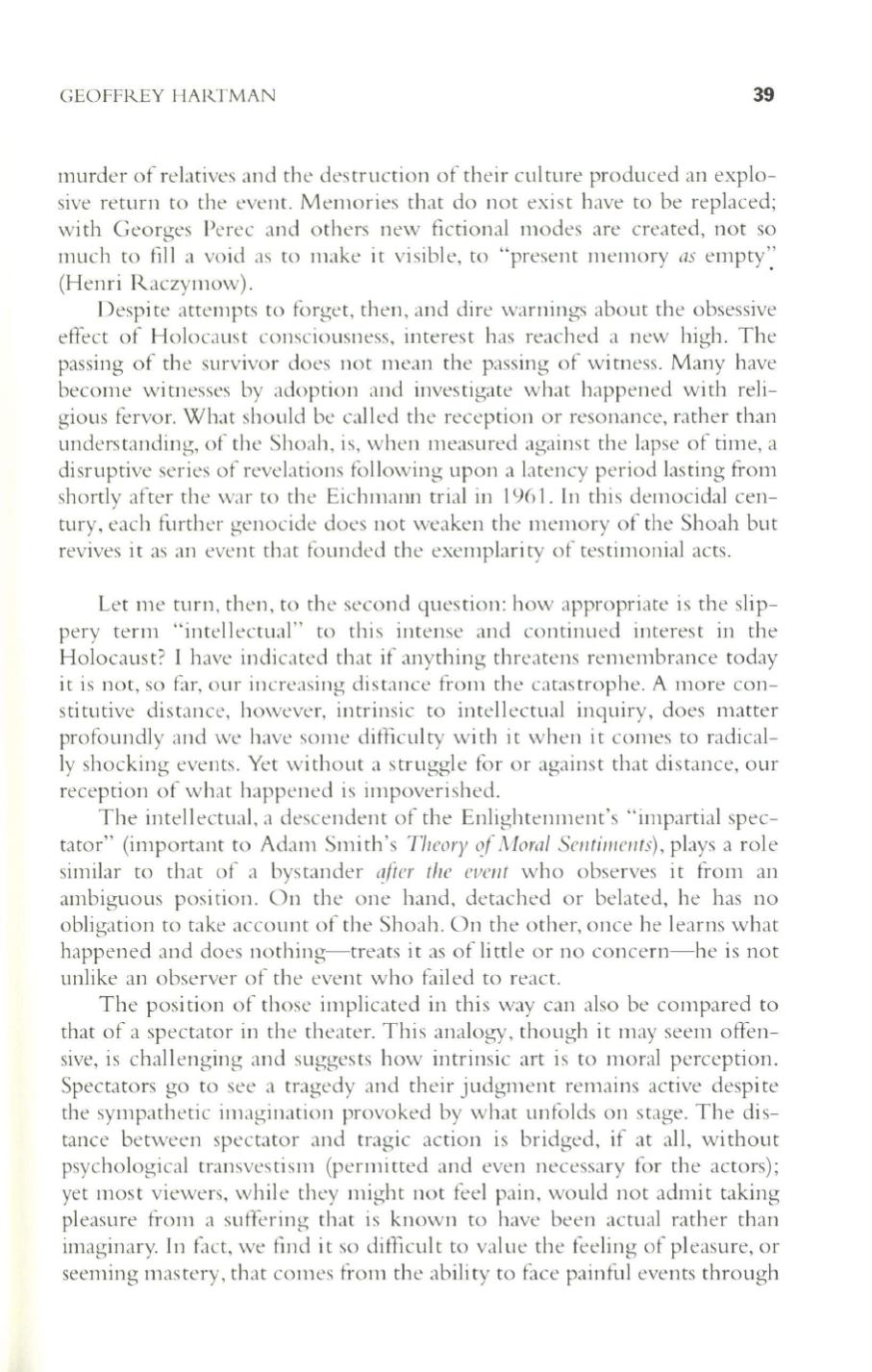
GEOFFR.EY HA Il.TMAN
39
murder of relatives and the destruction of their culture produced an explo–
sive return to the event. Memories that do not exist have to be replaced;
wi th Georges Perec and others new fictional modes are created, not so
much to fill a void as to make it visible,
to
"present memory
as
empty'.'
(Henri Raczymow).
Despite attempts
to
forget, then, and dire warnings about the obsessive
effect of Holocaust consciousness, interest has reached a new high. The
passing of the survivor does Ilot mean the passing of wi tness. Many have
become witnesses by adoption and investigate what happened with reli–
gious fervor. What should be called the reception or resonance, rather than
understanding, of the Shoah, is, when measured against the lapse of time, a
disruptive series of revelations following upon a latency period lasting from
shortly after the war to the Eichmann trial in 1961. In this democidal cen–
tury, each further genocide does not weaken the memory of the Shoah but
revives it as an event that founded the exemplarity of testimonial acts.
Let me turn , then,
to
the second question: how appropriate is the slip–
pery term "intellectual" to this intense and continued interest in the
Holocaust? I have indicated that if anything threatens remembrance today
it is not, so far, our increasing distance from the catastrophe. A n1.ore con–
stitutive distance, however, intrinsic to intellectual illquiry, does matter
profoundly and we have some difficulty with it when it comes
to
radical–
ly shocking events. Yet without a struggle for or against that distance, our
reception of what happened is impoverished.
The intellectual, a descendent of the Enlightenment's "impartial spec–
tator" (important
to
Adam Sm ith's
Theory of Moral Selltill/ellts),
plays a rol e
similar to that of a bys tander
after the evellt
who observes it from an
ambiguous position. On the one hand, detached or belated, he has no
obligation
to
take account of the Shoah. On the other, once he learns what
happened and does nothing-treats it as of li ttl e or no concern-he is not
unlike an observer of the event who failed to react.
The position of those implicated in this way can also be compared to
that of a spectator in the theater. This analogy, though it may seem offen–
sive, is challenging and suggests how intrinsic art is to moral perception.
Spectators go to see a tragedy and their judgment remains active despi te
the sympathetic imagination provoked by what unfolds on stage. The dis–
tance between spectator and tragic action is bridged, if at all, wi thout
psychological transvestism (permitted and even necessary for the actors);
yet most viewers, while they might not feel pain, would not admit taking
pleasure from a suffering that is known to have been actual rather than
imaginary.
In
fact, we find it so difficul t to val ue the feeling of pI easure, or
seeming mastery, that cOll1es from the ability
to
face painful events through


